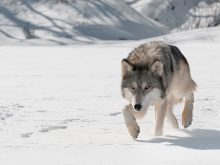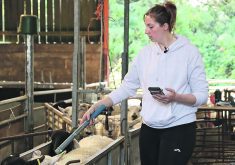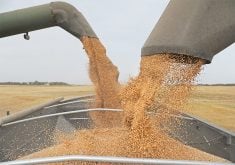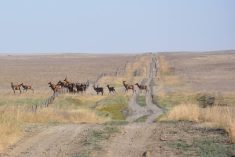REGINA — Saskatchewan rural municipal councils recently voted in favour of a wolf bounty, but environment officials said that is not under consideration right now.
Cattle producers told the Saskatchewan Association of Rural Municipalities annual convention that wolf populations have exploded in some areas.
Amanda Burback from the RM of Cote said that in 2022 their operation lost 10 calves in a community pasture and nine calves and three cows in their home pasture.
“My son went down and in two days shot three wolves,” she said of the community pasture.
Read Also
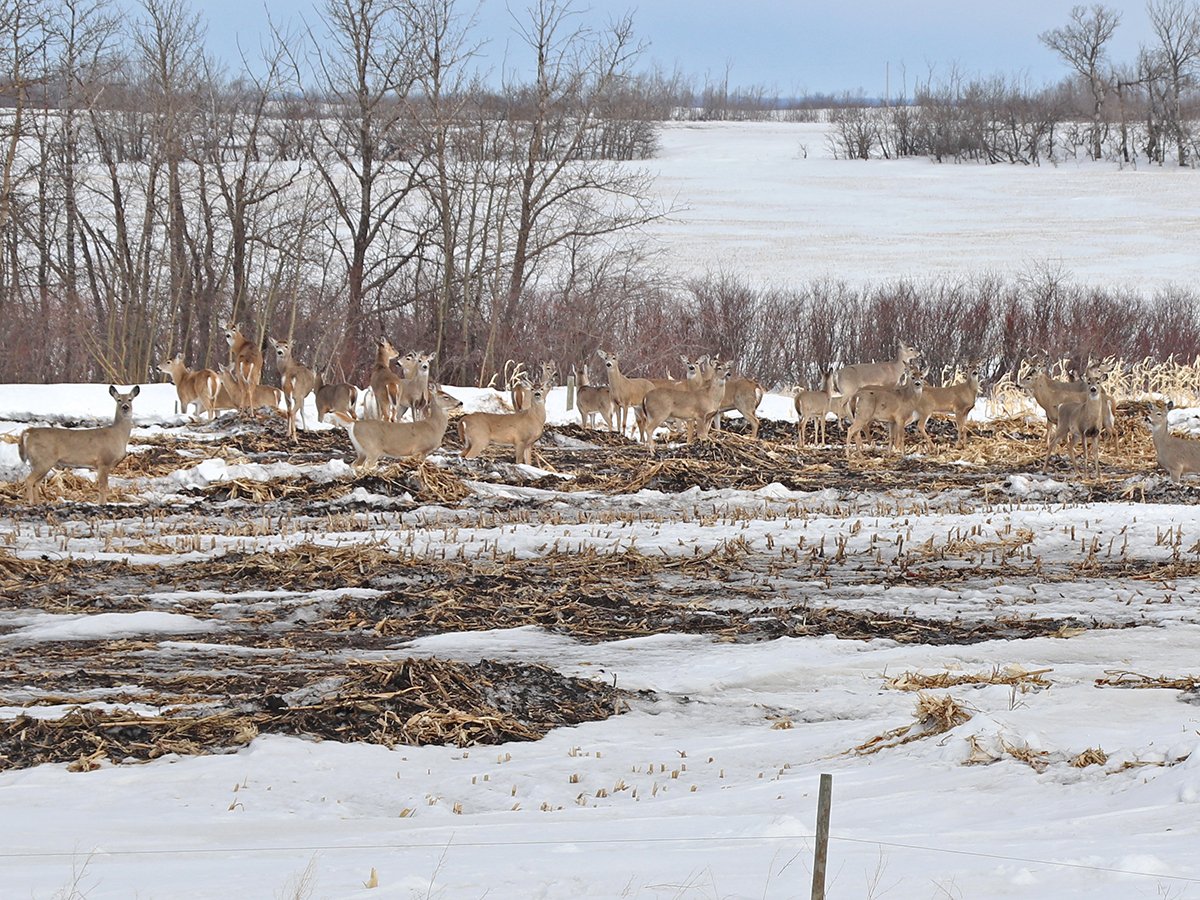
Foot-and-mouth disease planning must account for wildlife
Our country’s classification as FMD-free by the World Organization for Animal Health has significant and important implications for accessing foreign markets.
“Last year the Calder-Togo (pasture) lost 31 calves to wolf kills.”
Burback said this winter professional trappers were hired at a cost of $15,000 to help control the population.
“It’s an insane amount of wolves that are in our area and it needs to be controlled,” she said.
At approximately $2,400 per calf, producers are losing a lot of money.
A second resolution addressed that issue, asking for better compensation and criteria. Typically, producers are required to produce a carcass to get compensation from the province. Burback said two legs, the rib cage and the face were all that remained of an 1,800-pound cow after an overnight wolf kill.
“How are we supposed to find evidence of a calf taken by a pack of wolves?” she said.
Brad Knutson from the RM of Keys said he knows a bounty program is a touchy subject, but losses have gone through the roof. A community pasture in his area was short 40 calves last year.
Four municipalities, including Keys, Clayton, Livingston and Preeceville, put the bounty resolution forward and it was passed by 93 per cent of delegates.
Saskatchewan Environment said wolf populations appear stable and fluctuate due to food supplies. Wolves are wide-ranging and will move into new areas.
“There is no evidence that wolves are moving substantially outside of their normal range,” the ministry said.
“When small groups or individual wolves disperse, they move through new areas in search of suitable locations to establish territories.”
When some of a pack are killed, that pack may split in two and that increases the number of hunting units. The ministry said wolf hunting seasons have very low success rates and little impact on local populations. Trapping is more effective because it can be more targeted.
“South of the Northern Fur Conservation Block, any Saskatchewan resident can purchase a fur licence and harvest wolves during the fur season,” the ministry said.
Landowners can, as the Calder-Togo pasture did, seek assistance from trappers. The Wildlife Regulations also allow landowners to kill wolves on their land to protect property, including livestock, without a licence.
Research has shown that bounty programs are ineffective.
Saskatchewan’s predation compensation program pays up to 100 per cent for injury or death or up to 80 per cent of the animal’s value to cover veterinary costs.
Evidence of a predator attack is required.
Ivan Costley, reeve of the RM of Lake Johnston south of Moose Jaw, said rural Saskatchewan has wolf, deer and coyote problems and will soon have a bigger wild pig problem.
“We’ve got no hunters left because of regulation,” he said.
The Saskatchewan Crop Insurance Corp. said it will work with producers and industry groups to make sure compensation is adequate.
“Work is underway to determine if there are different approaches for SCIC to consider in extreme cases where wolf predation losses are high,” it said.
The organization said over the past five years about $250,000 per year has been paid out annually due to wolf predation claims. About 200 animals are lost each year. About 40 percent of the claims are within four localized areas in the northwestern and northeastern Saskatchewan.




